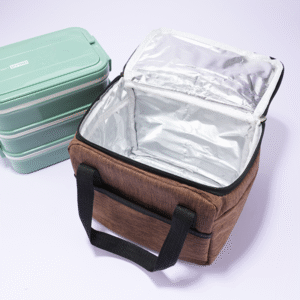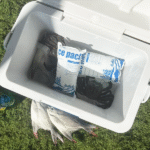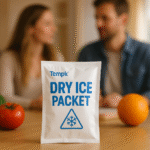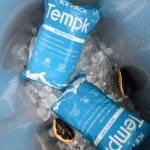How does cold chain temp monitoring protect your products and compliance?
Updated November 2025: Cold chain temp monitoring is the backbone of quality and regulatory compliance for temperature sensitive goods. This guide shows how integrated sensors and analytics keep vaccines, biologics, and perishable foods within safe ranges and why robust monitoring reduces waste and fines. Statistics reveal that poor refrigeration once caused a 12 per cent food loss and half of pharmacies experienced temperature excursions; today’s IoT solutions are changing that trend. Read on to learn practical steps and the latest trends.

Understand what cold chain temp monitoring is and why it is critical to prevent spoilage and ensure regulatory compliance.
Identify essential features of reliable temperature monitoring systems, including sensors, data logging, and real time alerts.
Learn how to choose and deploy IoT enabled hardware and software for your cold chain operations.
Discover the latest 2025 trends such as predictive analytics, AI, and sustainability that are reshaping cold chain temperature control.
Get practical tips for implementing, maintaining, and optimizing monitoring programs, plus FAQs and a quick self assessment.
What is cold chain temp monitoring and why does it matter?
Cold chain temp monitoring refers to the continuous measurement and control of temperatures during storage, transportation, and handling of temperature sensitive products. Its purpose is to maintain a narrow temperature range so that vaccines, pharmaceuticals, biologics, and perishable foods remain safe and effective. Without proper monitoring, minor deviations can result in spoilage or regulatory violations. For instance, a 2017 analysis estimated that inadequate refrigeration caused about 12 percent of global food production loss, and nearly half of pharmacies reported 1–4 temperature excursions over a year. Such lapses can lead to product recalls, financial losses, and reputational damage.
Monitoring also supports regulatory compliance. Health authorities and agencies worldwide require documented temperature control for pharmaceuticals and biologics, and failure to comply can result in fines or product destruction. Beyond compliance, effective monitoring builds consumer trust and demonstrates a commitment to quality.
Key features of an effective cold chain temp monitoring solution
An effective monitoring system combines precise hardware, robust software, and well designed processes. Each component plays a role in capturing accurate temperature data and acting on it quickly. The features below are widely considered essential:
| Feature | Function | Practical significance |
| Calibrated sensors | Sensors that are regularly calibrated to measure temperature accurately, even in extreme ranges. | Prevents false readings that could lead to unnecessary product disposal or overlooked excursions. |
| High frequency logging | Recording temperatures at short intervals provides a detailed profile of conditions. | Early detection of deviations enables faster corrective actions. |
| Excursion detection & alerts | Automated detection of out of range temperatures triggers alerts to responsible personnel. | Enables rapid response to prevent product spoilage and regulatory breaches. |
| Geotagged data & telemetry | Integrating GPS location with temperature readings offers context for where and when excursions occur. | Helps identify risk zones and refine logistics routes or storage conditions. |
| Cloud connectivity & remote access | Data stored in cloud platforms allows real time access and central oversight. | Multiple stakeholders can monitor conditions and maintain compliance from anywhere. |
Practical tips and suggestions
During transit: Equip vehicles and containers with calibrated sensors capable of high frequency logging. Set threshold alarms to immediately notify drivers or operations teams when temperatures approach dangerous levels.
During storage: Install sensors at critical points inside warehouses, refrigerators, or freezers. Use geotagged data to map hotspots or cold spots and adjust equipment accordingly.
In last mile delivery: Use portable data loggers that accompany shipments all the way to the end user. Ensure that delivery personnel are trained to check device status and respond to alerts.
Real case example: A national vaccine distributor adopted IoT sensors with GPS and excursion alerts. When a shipment from the warehouse to a clinic registered a slight temperature rise, the driver received an immediate notification, enabling them to adjust the refrigeration unit and avoid a potential 30 per cent wastage rate observed in other vaccine distributions. This action preserved product integrity and prevented compliance issues.
How to choose the right cold chain temp monitoring system?
Selecting an effective system requires balancing accuracy, connectivity, scalability, and regulatory compliance. Many companies upgrade from manual loggers or basic data recorders to automated systems because manual methods cannot ensure continuous data, often rely on human intervention, and may delay responses. Signs that it is time to upgrade include recurring product spoilage, frequent regulatory observations, or expansion into new markets with stricter standards.
Comparing hardware and software components
The cold chain monitoring market comprises both hardware devices (sensors, loggers, RFID tags) and software platforms (analytics dashboards, cloud storage, compliance reporting). In 2023, hardware accounted for roughly 78 percent of revenue share, indicating high demand for physical devices like sensors and loggers. However, software is expected to grow fastest because integration of data analytics and IoT platforms enables predictive insights and automation. The table below outlines differences and advantages:
| Component | Characteristics | Benefits |
| Hardware | Includes sensors, loggers, gateways, and controllers. Often requires physical installation and maintenance. Provides raw temperature readings and may include GPS modules. | High accuracy and reliability; immediate data capture; can operate offline before syncing. |
| Software | Platforms or apps that collect, store, analyze, and display data. Often cloud based with dashboards and APIs for integration. | Enables real time monitoring and alerts; automates compliance documentation; integrates with predictive analytics and AI for preventive maintenance. |
Tips for selecting hardware and software
Assess your environment: Consider whether your operations involve refrigerated trucks, warehouse freezers, or last mile distribution. Each environment may require sensors with different temperature ranges and form factors.
Check connectivity: If shipments travel through areas with poor network coverage, choose devices that can log data internally and sync later. For areas with stable connectivity, use devices that provide real time transmission.
Look for compliance features: Opt for software that supports audit trails, calibration schedules, and automatic generation of regulatory reports. This reduces manual paperwork and ensures readiness for inspections.
Consider scalability: Choose solutions that can grow with your business. As you expand into new regions or product lines, your monitoring system should support additional devices and users without major overhauls.
Real case example: A food logistics company experienced repeated spoilage incidents due to inconsistent manual temperature checks. By switching to an integrated hardware–software solution with high frequency logging and automatic alerts, they reduced load claims and product waste, demonstrating a strong return on investment.
How does IoT enhance cold chain temp monitoring?
Internet of Things (IoT) technology revolutionizes cold chain temp monitoring by providing continuous visibility, automated responses, and advanced analytics. According to technology forecasts, there will be over 75 billion connected devices by 2025. Cold chain operations benefit from this connectivity through sensors that communicate in real time, enabling proactive actions.
Deploying IoT sensors: best practices
IoT solutions include Bluetooth Low Energy (BLE) sensors, cellular or satellite devices, gateways, and cloud platforms. Successful deployment hinges on proper planning and configuration. Follow these guidelines:
Select appropriate sensors: Use BLE or cellular sensors based on power requirements and connectivity. BLE sensors are efficient for indoor environments, while cellular devices are ideal for long haul transport. Sensors should monitor temperature, humidity, light exposure, and shock where relevant.
Position sensors strategically: Place sensors at potential risk points—near doors, vents, or in the center of pallets. Deploy multiple sensors per unit to capture temperature gradients.
Configure devices remotely: Using cloud platforms, configure sensors for logging intervals, alert thresholds, and geofencing zones. Remote configuration reduces the need for onsite technical support.
Integrate geofencing and alerts: Set up geofencing to trigger alerts when a shipment enters or leaves a designated area. Combine location data with temperature readings to identify risk zones.
Establish a chain of custody: Use IoT data to create a digital trail from manufacture to delivery. This includes timestamps, location points, and temperature logs. A robust chain of custody supports regulatory audits and increases transparency.
Benefits of IoT in cold chain monitoring
Continuous visibility: IoT sensors provide live temperature readings and automatically log data, eliminating manual recording errors. Operators can view current conditions across multiple shipments or facilities through a central dashboard.
Automated alarms: When temperatures approach excursion thresholds, the system sends instant alerts to drivers or managers. This enables prompt corrective actions and reduces the risk of product loss.
Predictive analytics: By analyzing historical temperature patterns, AI algorithms forecast potential issues. For example, if a refrigeration unit gradually loses efficiency, the system can schedule maintenance before failure. Such predictive maintenance reduces downtime and extends equipment life.
Improved traceability: Integrating geotagged temperature data with blockchain or secure cloud storage builds an immutable record of product conditions. This enhances trust among partners and simplifies compliance reporting.
Practical example: A biotech company implemented IoT sensors and predictive analytics to monitor biologic shipments. The system detected unusual vibration patterns, indicating that a compressor was failing. Maintenance was scheduled before the issue escalated, preventing a costly loss. This proactive approach is typical of modern cold chain programs using IoT and AI.
What are the 2025 trends and innovations in cold chain temp monitoring?
The cold chain landscape is evolving quickly, driven by technology, regulatory changes, and sustainability initiatives. Understanding current trends helps businesses remain competitive and compliant. Here are some noteworthy developments:
Trend overview
Predictive analytics and AI: Systems now analyze environmental data and historical patterns to predict equipment failures or route delays. AI algorithms minimize human errors and optimize responses. By 2025, predictive analytics is a standard feature in premium monitoring solutions.
Blockchain and data integrity: Some monitoring platforms incorporate blockchain to secure temperature data across the supply chain. This ensures tamper proof records and improves traceability.
Sustainable packaging and materials: Eco friendly packaging solutions (e.g., phase change materials, reusable containers) paired with embedded sensors reduce waste and carbon footprints. Companies are adopting carbon neutral logistics strategies to meet environmental targets.
Integration with telematics and fleet management: Monitoring systems now link directly with telematics to manage vehicle performance, fuel consumption, and route optimization. This holistic approach reduces costs and emissions.
Regulatory tightening: Governments worldwide are increasing enforcement of Good Distribution Practice (GDP) guidelines. Real time monitoring helps businesses meet these obligations while offering auditable trails.
Latest developments at a glance
Market growth: The global cold chain temperature monitoring market was valued at USD 15.89 billion in 2023 and is projected to reach USD 55.75 billion by 2030, registering a CAGR of 19.9 percent. This growth reflects rising demand for pharmaceuticals, biologics, and perishable foods.
Regional insights: North America held about 37 percent of revenue share in 2023 due to early adoption of digital monitoring and strict regulations. Asia Pacific is expected to grow at the fastest CAGR (22.3 percent), driven by expanding healthcare and logistics infrastructures.
Segment dynamics: The frozen segment ( 18 °C to 25 °C) dominated the market with a 61 percent share in 2023. The chilled segment is projected to grow at a 17.9 percent CAGR due to increasing demand for fresh produce and ready to eat foods.
| Market Segment | 2023 Share / Forecast | Significance |
| Hardware vs Software | Hardware held ~78 % of market revenue; software expected to grow fastest due to analytics adoption. | Companies should invest in robust hardware now but plan for software upgrades that support AI and predictive analytics. |
| Regional Distribution | North America ~37 % in 2023; Asia Pacific fastest growth (22.3 % CAGR). | Global companies must adapt to regional regulations and infrastructure differences. |
| Temperature Range | Frozen segment >61 % share; chilled segment growing at 17.9 %. | Different temperature ranges require tailored monitoring solutions. |
Market insights
The rapid market growth is fueled by increased demand for biologics, biosimilars, vaccines, and specialty foods. Regulatory frameworks like the U.S. FDA’s Drug Supply Chain Security Act and EU GDP guidelines are forcing companies to adopt sophisticated monitoring. Meanwhile, consumer expectations for fresh products are pushing logistics providers to invest in technology. Understanding these drivers helps businesses align their strategies with future opportunities.
How to implement and maintain a cold chain temp monitoring program?
Implementing a successful program requires planning, training, and continuous improvement. Follow these steps to ensure your monitoring system delivers value and remains compliant:
Define requirements: Identify products’ temperature ranges, transit durations, and environmental challenges. Establish acceptable excursion ranges and documentation requirements.
Select equipment: Choose sensors and loggers that meet measurement accuracy standards and communication needs. Ensure that devices are calibrated and certified for regulatory compliance.
Design data flows: Decide how data moves from sensors to cloud platforms. Create dashboards with roles and permissions for different users (e.g., drivers, quality managers). Use open APIs to integrate with existing enterprise systems.
Train staff: Provide practical training on device handling, alert response, and regulatory guidelines. Encourage staff to report anomalies and act promptly.
Document procedures: Draft standard operating procedures (SOPs) covering installation, calibration, alarm management, and corrective actions. Regularly review and update SOPs based on performance data.
Maintain and calibrate: Schedule periodic calibration and maintenance for sensors and refrigeration units. Use predictive analytics to plan preventive maintenance and avoid failures.
Review and improve: Analyze historical data to identify trends and root causes of excursions. Use insights to optimize shipping routes, adjust storage conditions, and upgrade equipment.
Practical self assessment for readiness
Use this quick self assessment to gauge whether your organization is ready for a modern cold chain temperature monitoring solution. Answer each question with Yes or No:
Do you currently record temperatures continuously during storage and transport?
Can your system provide real time alerts when temperatures exceed or fall below acceptable ranges?
Are your sensors calibrated and certified regularly
Do you integrate geolocation data with temperature records to analyze risk zones?
Does your monitoring solution generate compliance reports automatically?
If you answered No to any of the above, consider upgrading or refining your monitoring program. A modern system ensures quality, reduces waste, and simplifies regulatory compliance.
Practical example: A pharmaceutical wholesaler used manual temperature recording with paper logs. After switching to an automated system with remote sensors and geofencing, they reduced regulatory deviations, improved customer confidence, and reported fewer product returns.
Frequently Asked Questions
Question 1: How often should I calibrate sensors in my cold chain temp monitoring system?
Regular calibration depends on usage and device specifications but is typically recommended at least once per year. Calibration ensures accurate readings and compliance with regulatory requirements. Some high usage environments may require more frequent calibration.
Question 2: What temperature ranges are considered frozen and chilled?
The frozen range generally covers 18 °C to 25 °C, while the chilled range covers 2 °C to 8 °C. Monitor and maintain the range specified by your product’s manufacturer to ensure quality.
Question 3: Are wireless sensors secure enough for pharmaceutical data?
Modern sensors use encrypted communication protocols and can integrate with secure cloud platforms and blockchain technologies. Always implement strong authentication, access control, and data encryption to protect sensitive data.
Question 4: How can predictive analytics improve my cold chain?
Predictive analytics analyzes historical temperature and equipment performance data to identify patterns and forecast failures. It helps plan maintenance, optimize routes, and reduce energy consumption. Early intervention saves costs and prevents product loss.
Question 5: What should I do if an excursion occurs during transit?
If an excursion occurs, document the event, notify relevant stakeholders, and assess product quality. Many minor deviations can be resolved by adjusting equipment or adding ice packs, but some products may require disposal. Having a documented incident response procedure is essential.
Summary and recommendations
Cold chain temp monitoring is more than a compliance requirement—it is a strategic tool for ensuring product quality, reducing waste, and enhancing customer trust. Key takeaways include:
Importance of monitoring: Continuous temperature tracking prevents spoilage and regulatory violations. Past studies show that 12 percent of food production was lost due to inadequate refrigeration.
Features of good systems: Reliable sensors, high frequency logging, excursion alerts, geotagged data, and cloud connectivity are essential.
IoT benefits: IoT sensors deliver continuous visibility, automated alerts, predictive maintenance, and improved traceability.
Trends and market insights: Predictive analytics, blockchain, sustainable packaging, and regional market growth are shaping the 2025 landscape. Businesses should stay informed and invest accordingly.
Implementation and maintenance: A structured program that includes calibration, training, documented procedures, and continuous improvement ensures long term success.
Ultimately, adopting an advanced cold chain temp monitoring system protects your investment, preserves product quality, and positions your organization to meet evolving regulations and customer expectations.
Actionable next steps
To implement or improve your cold chain temperature monitoring program, take these next steps:
Evaluate current systems: Use the self assessment above to identify gaps in your current monitoring process.
Research solutions: Compare hardware and software offerings that provide calibrated sensors, real time alerts, and data analytics.
Plan a pilot project: Implement a small scale trial using IoT sensors and predictive analytics to assess performance and return on investment.
Scale and refine: After successful pilots, expand the system across your supply chain. Regularly review data to refine temperature ranges, routes, and equipment maintenance.
Consult experts: If you need help selecting or integrating technology, consult specialists who understand your industry’s regulatory and operational demands.
About Tempk
Tempk is a specialist in cold chain temperature monitoring solutions. We combine decades of industry experience with the latest IoT and predictive analytics technologies to deliver reliable systems for pharmaceuticals, biotech, and food industries. Our sensors and cloud platforms offer real time data, automated alerts, and comprehensive compliance reporting. We prioritize accuracy, security, and scalability, ensuring that your products stay safe throughout the supply chain.























